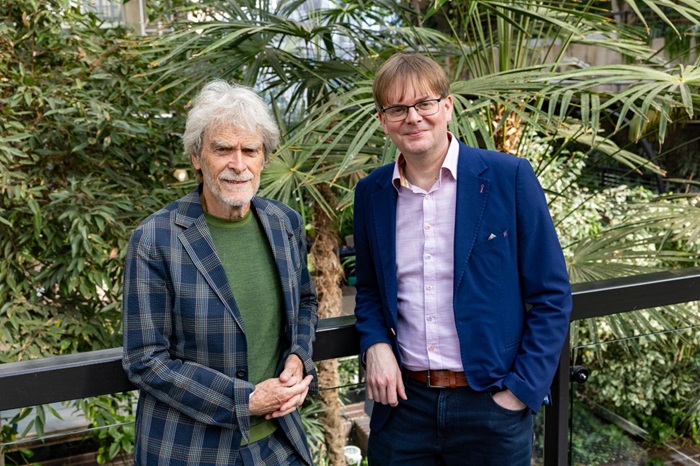During Wednesday’s Global TV Group webinar hosted in the Czech Republic by the Association of Commercial Television (AKTV), British expert on advertising effectiveness Orlando Wood pointed out that current advertising is moving away from creative principles and losing its ability to truly engage audiences. “Over the past twenty years, the media has changed dramatically, and advertising has started focusing on increasingly narrow targeting instead of reaching millions. A golden age of advertising technology has not led to a golden age of advertising effectiveness,” Wood stated.
According to Wood, the advertising industry has moved away from storytelling, drama, characters, and humour, shifting towards “flatter, more abstract, and more mechanical communication.” The result is a loss of humanity and emotion. “We have shifted from engaging emotional advertising to sales-focused advertising. Both approaches have their place, but emotional advertising is crucial for growth and profitability,” he emphasised.
Wood bases his insights on neuropsychology. As he explained, the right hemisphere of the brain responds to storytelling, metaphors, music, and humour, and is more connected to emotional centres. It is this “broad beam of attention” that is key to brand memorability and growth. The left hemisphere, on the other hand, is narrowly focused and mechanical, which is why advertising focused solely on performance can only reach those who are already aware of the brand.
“Emotions are the foundation of emotional advertising. They influence our attention, store things in memory, and create instinctive preferences. This strengthens the brand and its ability to grow,” said Wood. According to research by System1, only a small percentage of ads achieve a high emotional impact. This shows that “the industry churns out too many boring ads.”
As a positive example, he mentioned the Yorkshire Tea campaign, which features well-known local personalities and has long been built around the slogan “Where everything’s done proper.” According to Wood, the campaign nearly doubled the brand’s market share. “That is the power of a big idea. That’s what emotional advertising can do,” he added.
The choice of media plays an important role in influencing effectiveness. Research on this ad showed that television and video on big screens (BVOD) were able to maintain attention throughout the entire ad, whereas attention dropped significantly at the very beginning of online video in social media feeds. “Television does three things: it evokes emotion, allows you to reach millions, and gives time for creativity to make an impact. If you want to grow, you have to put on a spectacle, and your spectacle needs a floodlit stadium. That’s television,” Wood summarised.
In conclusion, he called for a return to the principles that make advertising fun and effective: “Advertising needs a new creative revolution. We must once again create campaigns that bring joy and inspiration to people, thereby strengthening brands.”
Creativity is the key to growth — AI only amplifies it
In a presentation at the same event, legendary advertising creator John Hegarty summarised the results of research conducted among 500 global business leaders and highlighted the crucial role of creativity in current and future marketing.
According to the study, 87% of leaders consider creativity to be as important as efficiency and cost control. “That surprised us. We expected the numbers to be around fifty per cent. But it turns out that creativity is no longer a ‘nice to have’ — it is becoming key to the future of business,” Hegarty stated.
According to Hegarty, artificial intelligence further enhances the importance of creativity. “Sixty-nine per cent of leaders say that AI makes creativity even more important. The question remains, though: where will creativity come from? From humans, or from machines?” he mentioned. At the same time, he emphasised that the ability to imagine is purely human. “AI can collect and combine, but it cannot imagine. And that is our superpower.”
Hegarty also referred to OpenAI CEO Sam Altman: “Critical thinking, creativity, and the ability to come up with new ideas will be the most valuable skills of the future.”
The research also shows that 40% of respondents see the CEO as the main driver of creativity within the company. According to Hegarty, this means that creativity is moving to the level of company leadership. “This is an opportunity for marketing directors as well. The CMO has a unique chance to become a driver of creativity and reclaim their seat at the table,” he said.
According to Hegarty, agencies are at a crossroads. On one hand, their contribution to creativity is weakening because they have relied too much on data and algorithms; on the other hand, they have the opportunity to regain the role of strategic partner. “We are in the age of storytelling. If brands want to engage, they must be able to inspire, not just chase customers through data,” Hegarty stated.
He sees the future of agencies in their ability to become experts in creativity and partners to company leadership: “Agencies must prove that they understand the essence of creativity, know how to define and cultivate it. Only then can they become trusted advisors to the CEO.”
The closing discussion revealed that:
- Creativity remains a key factor for success.
- Humour and emotions are universal means of connecting with the audience.
- Long-term brand building through big creative ideas and visually engaging content delivers a higher return on investment than short-term, purely data-driven campaigns.
- Television/BVOD is a key medium for storytelling, creating reach, and expanding brand awareness.
Source: mediaguru.cz

